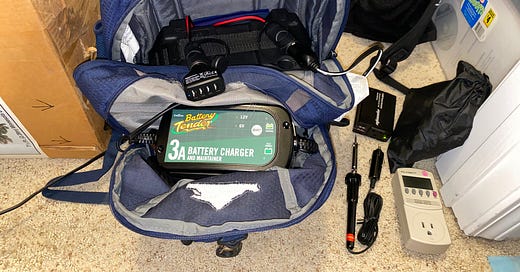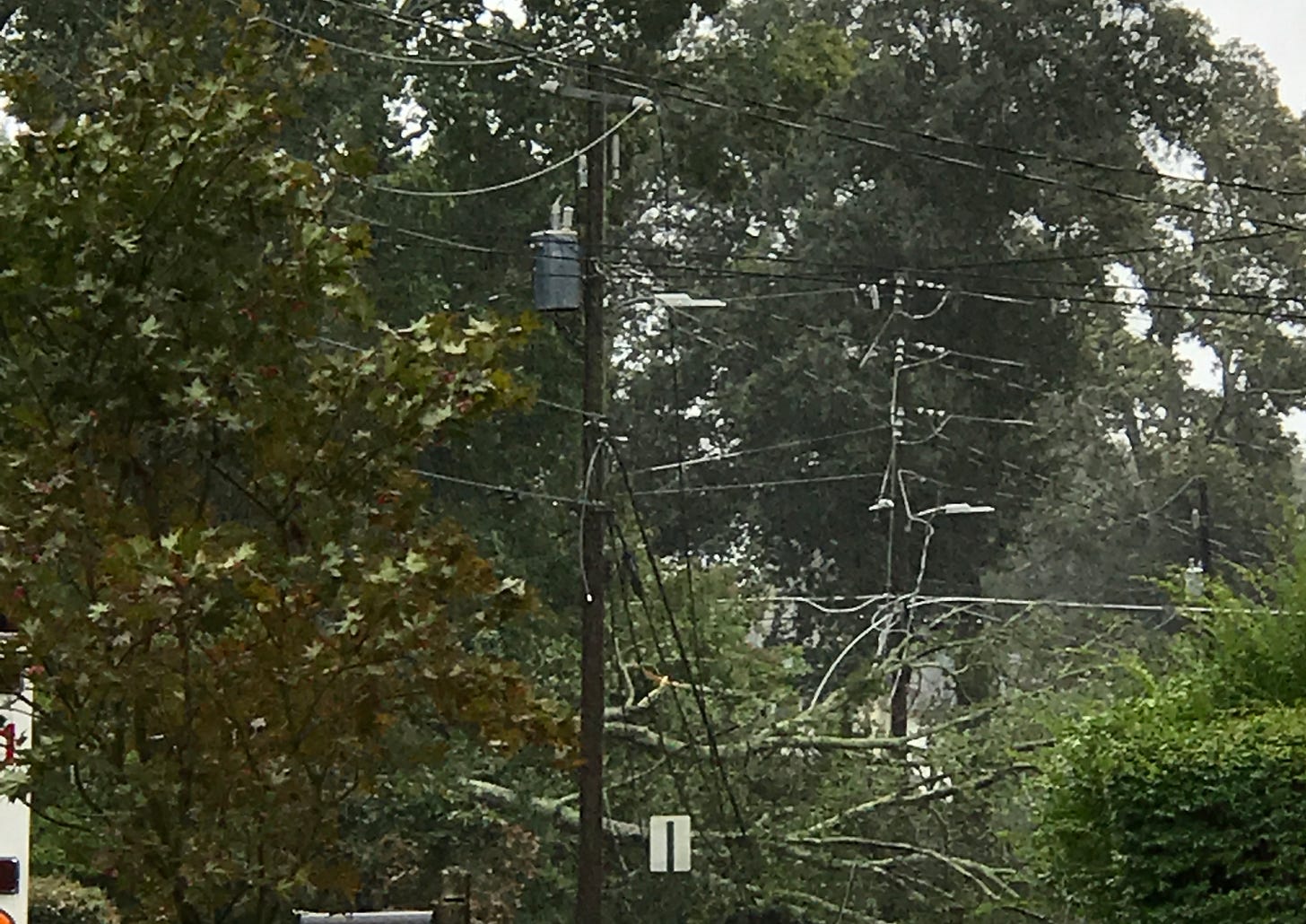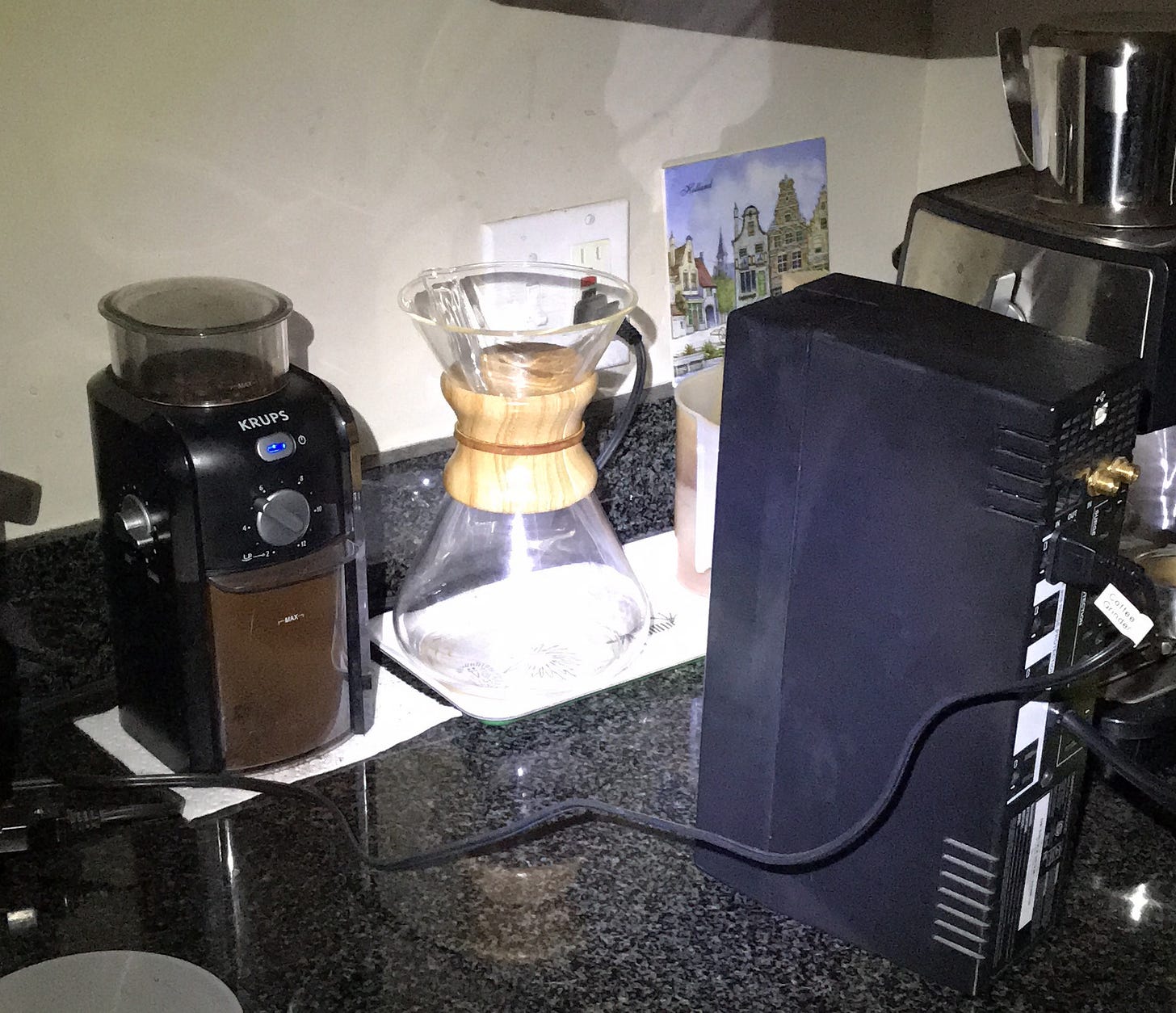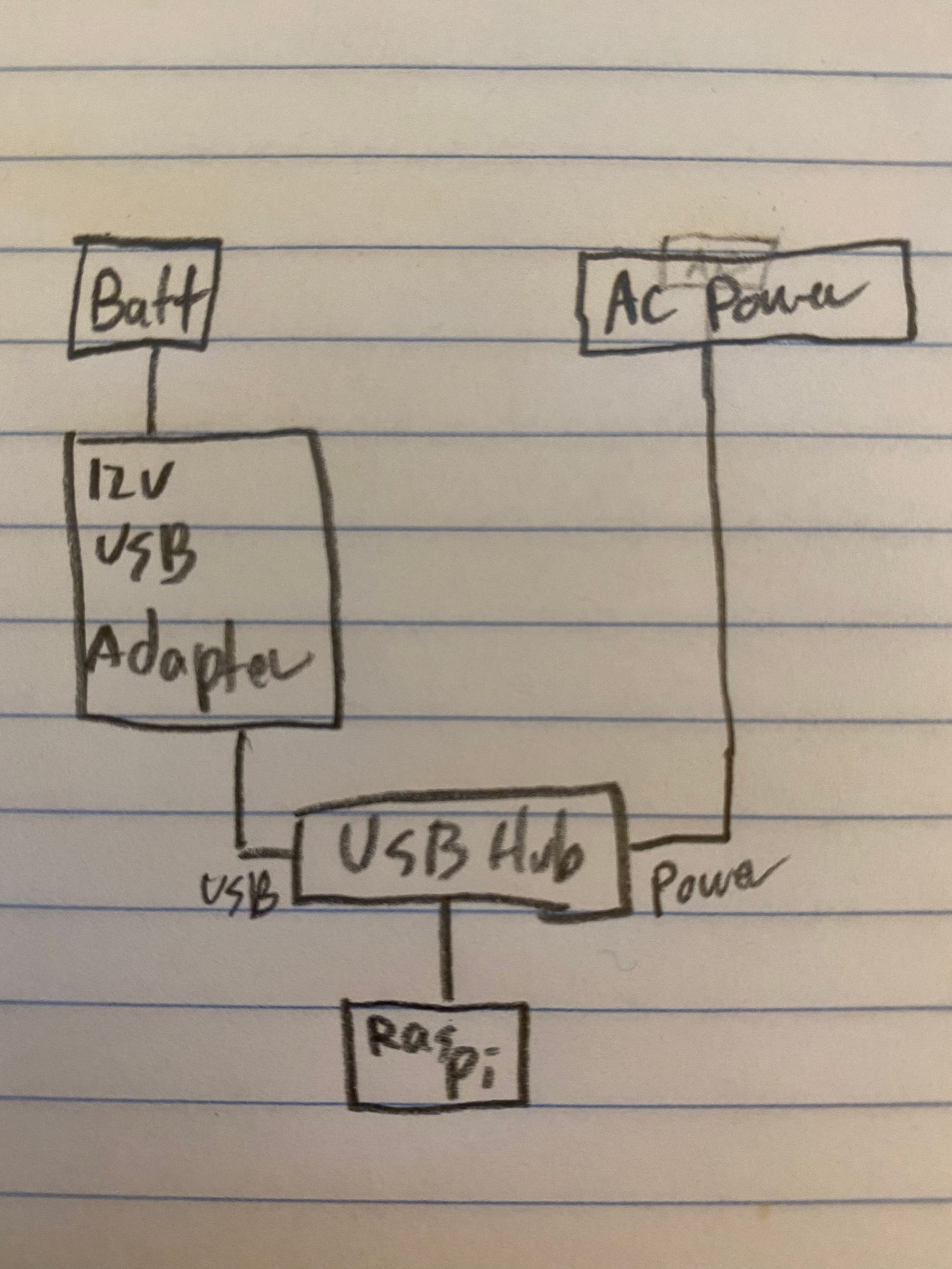Hurricane Irma came through Atlanta in September 2017. My family wasn’t impacted as severely as many, but we still lost power to our home for four days, and that gave me a lot of quiet, unplugged time to reflect on how to improve my resilience during emergencies. Afterward we started keeping more emergency supplies on hand, prepared a family communication checklist, and put our home network infrastructure on a UPS - but I also realized that I also wanted to create a way to maintain an “electrical reservoir” for other devices. This is the story of what I built and why.
I started writing this issue because I wanted something quick to talk about as a break from my teleprompter series. But this is going to end up as a three part series too.
Irmageddon
Hurricane Irma had slowed to a Tropical Storm by the time it hit Atlanta, but it was still the first time Atlanta experienced a Tropical Storm Warning. It was also my first time experiencing an extended power outage.
I’ve come to expect certain things when the power is out – it will be dark, it will be hot, the kids will get bored – but this extended outage brought many surprises. Without power to my 4G Signal Booster, I could barely get a signal on my mobile phone. My wired internet connection still worked, but only if I had a way to keep my router powered. And there were so many small discomforts: the frustration of knowing how to fix a broken battery-powered device but not having a way to power a soldering iron; having running water and a gas stove, but no way to grind my coffee beans. My freezer became a Schrödinger box, where the only way to be sure whether my food was spoiling would be to open the door and release any lingering cool air. I started making a list of things I wanted to fix once the emergency passed.
We made it through with no major property damage or food spoilage - and I started exploring ways to work around the problems I’d experienced. I found good solutions (a better UPS; butane soldering irons; hand-crank burr grinders; wireless fridge thermometers), but so many of these problems would have been easily solved if I’d had some sort of energy reservoir I could tap into.
Design Considerations
I really wanted to find a way to generate energy mechanically via a hand crank or slowly descending weight. But powering a small radio is a very different than recharging a laptop or phone - a full phone recharge could require over an hour of intense cranking or the energy equivalent of an adult climbing to the top of a 54-story building[1]. (There’s a reason energy consumption became so much cheaper once we discovered we could extract oil from whales or the ground.) I also thought about water power, but using thousands of gallons of water to recharge a phone during an emergency is pretty reckless.
The normal way people solve this problem is with a portable generator, but I didn’t want to follow that path: with the exception of my refrigerator, virtually everything I wanted electricity for was low-voltage and low-power, and I didn’t want the unnecessary expense and overhead of maintaining a generator and storing fuel. I wanted something with the portability and reliability of a generator, but optimized for keeping small devices like phones and laptops charged. As of 2017, portable power stations built around lithium-ion batteries were starting to become available, but they were largely glorified USB phone chargers and were very expensive. The market has improved considerably since then, and it’s now possible to buy a fully-integrated portable power station for a per-watt-hour cost of about 3-5x what I eventually paid.
(I did want to find a way to power my refrigerator during an emergency, so I eventually bought a heavy-duty power inverter that I could connect to my car. Powering my fridge with my car is less efficient than a dedicated generator would be, but at a much lower upfront cost and with none of the maintenance overhead.)
What I Built
Two months earlier I’d seen an article on Hacker Newsletter about building a stand-alone Solar Generator. Solar power isn’t an effective choice for backup power in Georgia - I tend to lose power during thunderstorms and hurricanes when sunlight is minimal - but I latched on to the idea of using commodity 12V Sealed Lead Acid batteries as the basis for a battery system.
Here’s what I bought:
A U1 Deep Cycle Sealed Lead Acid Battery for ~$65. U1 batteries seem to hit the sweet spot for minimizing the cost per watt hour of storage; this battery holds 420 Watt-hours.
A Battery Tender for about $40 - this charges the battery when it’s low and keeps it charged during non-emergency times.
A battery box for $12
Two sets of Fused Cigarette Lighter Receptacles for $12 each
A 150W Power Inverter for $15
A USB Car Charger for $15
I plugged it all together inside an old backpack - battery in the main pouch, battery tender in another pouch, cables and accessories in little bags.
Takeaways
Here are a few notes after five years of use:
I had planned to use this primarily to charge mobile phones, but thanks to USB-C I can charge most of my laptops too. I’m now able to work remotely from anywhere with a cell signal even if I don’t have access to a power outlet. The battery holds so much energy it feels virtually unlimited - I’ve only ever drained it once, and that was during a five day camping trip filled with phone, tablet, and laptop charges.
Because it’s built around 12V batteries, I can run anything that will plug into a car cigarette lighter outlet (like a soldering iron). If I connect a USB Car Charger, I can also run anything that can run off 5V (like a network switch, using this cable). And with a universal power adapter or a buck boost power supply I can adjust the voltage to supply most other low power household devices. I’ve even connected it to my heavy duty inverter and powered my fridge for a couple hours.
This works really well as an uninterruptible power supply for USB-powered devices like the Raspberry Pi. And by connecting a wall-powered USB hub in between the Pi and the battery packpack, I can also disconnect the Pi from the wall or from the battery without the Pi powering off.
Be careful. Although I haven’t had any issues, lead acid batteries are dangerous. They’re made out of sulfuric acid and lead, neither of which I really want to be around, and if something goes wrong they will vent poisonous hydrogen sulfide gas. (Keep in mind that most batteries are dangerous in some way or another - it’s the reactiveness of these materials that makes them effective as a way to store and release energy, as with gasoline and gunpowder.)
I really like how modular and upgradable this setup is. When my battery wears out, I can replace it for $70 rather than having to buy a completely new kit. For my needs this still makes it a better option than most of the standalone lithium ion power station options that are now becoming available.
I don’t yet have a good way to measure how much energy I’ve used, but I’ve purchased some current monitors that I hope to build into a low-power monitoring system someday.
Further Experiments
This project succeeded because I could depend on an established market of 12V devices to use and because USB-C has become such an effective platform for powering higher-power electronics. Still, I had a couple old laptops that didn’t support USB-C, and I was hoping to find a way to find a way to power them without the overhead of a power inverter. I was also interested in using this same “platform” idea to use lower-cost power tool batteries as a higher density, faster-to-charge, more portable extension of this project.
Spoiler alert: I made some gigantic and expensive mistakes, though I did also find some interesting solutions. I’ll tell you more in next week’s issue!
[1] This charger has a capacity of 38.5 watt-hours or roughly 138.6 kJ. Since Gravitational Potential Energy is the product of mass, gravity, and height, an 80kg weight would need to be lifted ~178m or about 54 stories to produce an equivalent amount of potential energy.







